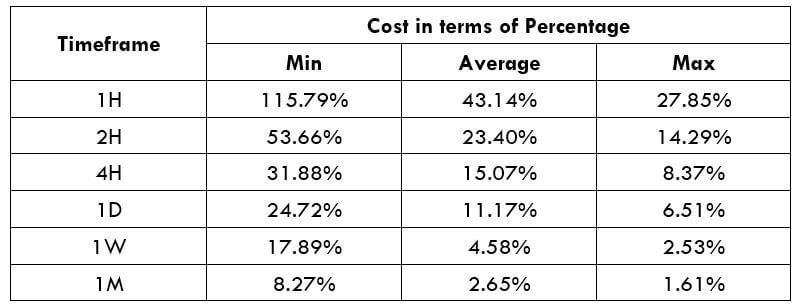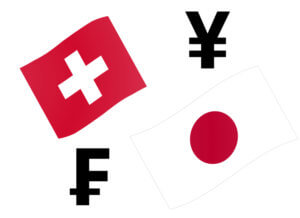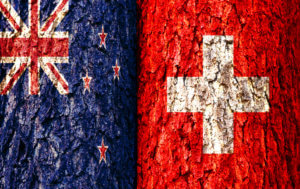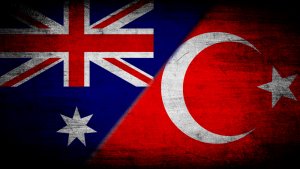Introduction
CHF/AUD is the acronym for the Swiss Franc against the Australian Dollar, and it is an exotic Forex currency pair. Here, the CHF is the base currency, and the AUD is the quote currency. Both CHF and AUD are major currencies and are vastly traded in the foreign exchange market. CHF is the official currency of Switzerland, while AUD is the national currency of Australia.
Understanding CHF/AUD
The price of this pair in the trade market defines the value of AUD equivalent to one Swiss Franc. It is quoted as 1 CHF per X AUD. For instance, if the value of this pair is 1.5318, these many Australian Dollars are required to acquire one CHF.
Spread
The difference between the ask-bid price is referred to as Spread, which is charged by the broker. This value is different in the ECN and STP accounts. The estimated Spreads for CHF/AUD pair is given below.
ECN: 17 pips | STP: 22 pips
Fees & Slippage
A fee is a price that one pays for the trade. There are zero fees charged on STP accounts, but a few pips are charged on ECN accounts. Slippage is the difference calculated between the price by the trader and the price the trader received from the broker.
Trading Range in CHF/AUD
The trading range is represented in the tabular format to showcase the pip movement of a currency pair in various timeframes. These values are useful in ascertaining the profit that can be generated from trade in advance. To discover the trading costs, we must multiply the below volatility value with the pip value of this pair.
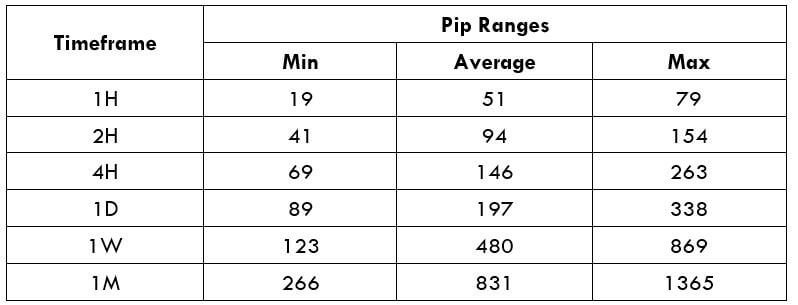
Procedure to assess Pip Ranges
- Add the ATR indicator to your chart
- Set the period to 1
- Add a 200-period SMA to this indicator
- Shrink the chart so you can assess a large time period
- Select your desired timeframe
- Measure the floor level and set this value as the min
- Measure the level of the 200-period SMA and set this as the average
- Measure the peak levels and set this as Max.
CHF/AUD Cost as a Percent of the Trading Range
The trading range is obtained by identifying the ratio between total cost and volatility; it expressed in terms of percentage. Below is the representation of the cost differences of traders in various timeframes and volatilities.
ECN Model Account
Spread = 17 | Slippage = 5 |Trading fee = 8
Total cost = Slippage + Spread + Trading Fee = 5 + 17 + 8 = 30

STP Model Account
Spread = 22 | Slippage = 5 | Trading fee = 0
Total cost = Slippage + Spread + Trading Fee = 5 + 22 + 0 = 27

Trading the CHF/AUD
When the percentage value is higher, the cost of the trade gets more expensive. From the above tables, we can conclude the values are significant in the min column and relatively less significant in the max column. It means that the costs are high when the market’s volatility is low. It is not advisable to trade when both the volatility and cost of trading is high. Balancing both these factors is ideal to trade when the pair’s volatility is in the range of the average values.
Additionally, to lower your costs even further, you can place trades using limit orders instead of market orders. By executing limit orders, the slippage will not be involved in the calculation of the total costs. And this will set the cost of the trades low by a decent number. An example of the same is given below.
STP Model Account (Using Limit Orders)
Spread = 22 | Slippage = 0 |Trading fee = 0
Total cost = Slippage + Spread + Trading Fee = 0 + 22 + 0 = 22
